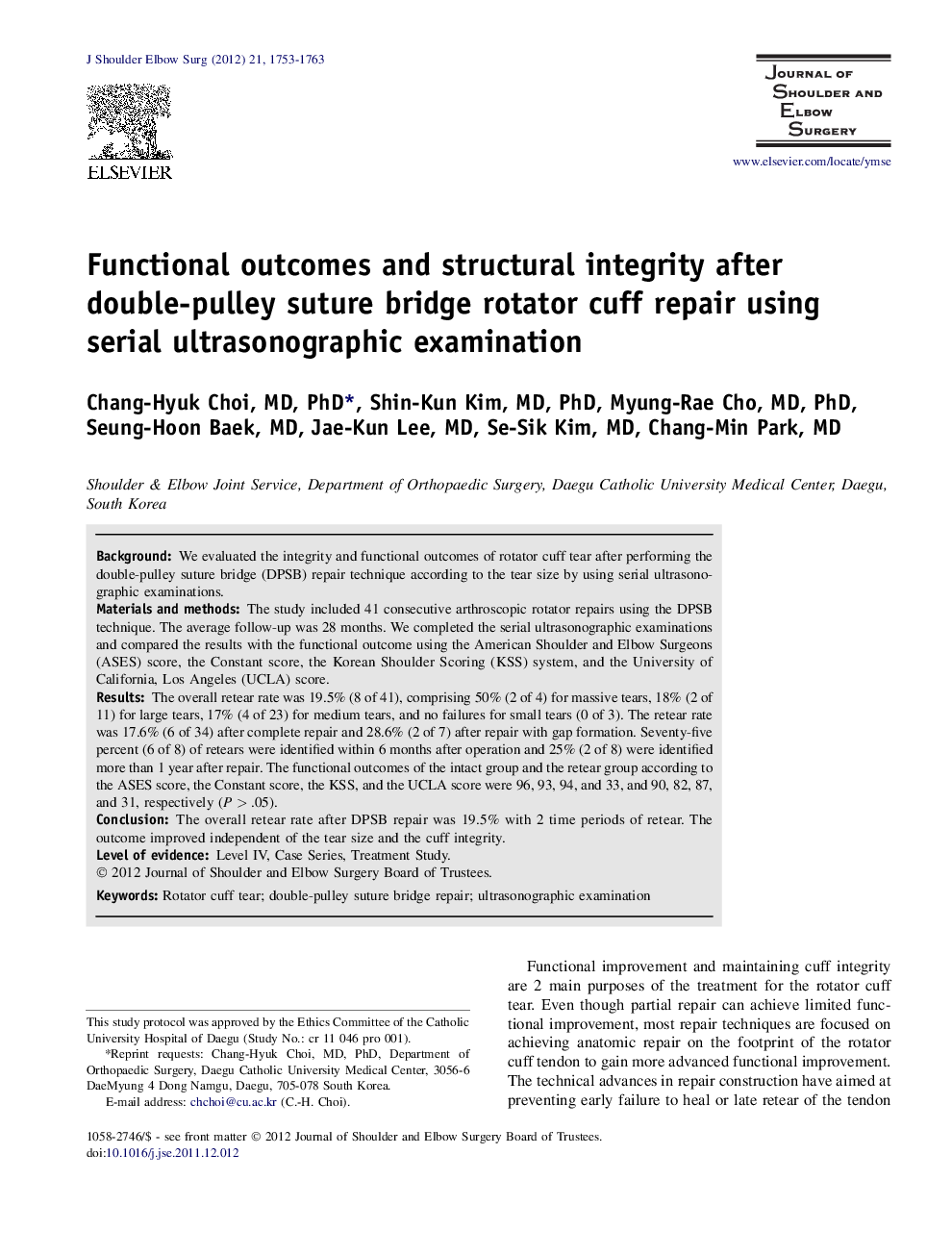| Article ID | Journal | Published Year | Pages | File Type |
|---|---|---|---|---|
| 4073849 | Journal of Shoulder and Elbow Surgery | 2012 | 11 Pages |
BackgroundWe evaluated the integrity and functional outcomes of rotator cuff tear after performing the double-pulley suture bridge (DPSB) repair technique according to the tear size by using serial ultrasonographic examinations.Materials and methodsThe study included 41 consecutive arthroscopic rotator repairs using the DPSB technique. The average follow-up was 28 months. We completed the serial ultrasonographic examinations and compared the results with the functional outcome using the American Shoulder and Elbow Surgeons (ASES) score, the Constant score, the Korean Shoulder Scoring (KSS) system, and the University of California, Los Angeles (UCLA) score.ResultsThe overall retear rate was 19.5% (8 of 41), comprising 50% (2 of 4) for massive tears, 18% (2 of 11) for large tears, 17% (4 of 23) for medium tears, and no failures for small tears (0 of 3). The retear rate was 17.6% (6 of 34) after complete repair and 28.6% (2 of 7) after repair with gap formation. Seventy-five percent (6 of 8) of retears were identified within 6 months after operation and 25% (2 of 8) were identified more than 1 year after repair. The functional outcomes of the intact group and the retear group according to the ASES score, the Constant score, the KSS, and the UCLA score were 96, 93, 94, and 33, and 90, 82, 87, and 31, respectively (P > .05).ConclusionThe overall retear rate after DPSB repair was 19.5% with 2 time periods of retear. The outcome improved independent of the tear size and the cuff integrity.
